Natural Biopolymers From Land and Sea
Polymara are working to create new bioplastics from natural biopolymers, obtained from plentiful renewable sources to replace single use forever plastic items.
The word Bioplastic is used to define materials made from natural substances, that compost or fully decompose in the earth all the way through to materials made from renewable sources that behave the same as fossil fuel sourced plastics and which have the same longevity. They are different from fossil fuel based polymers because of their natural origins, and because their structures have greater variation within them not a true repetition of the same “lego block” over and over.
The most sustainable bioplastics use biopolymers in their formulations. Biopolymers are found in nature in much of the biomass around us and many of them have been already used to make some bioplastics that we are familiar with such as the starch based bags for food composting.
The most abundant natural biopolymers are:
Cellulose – wood provides 50% of world’s cellulose.
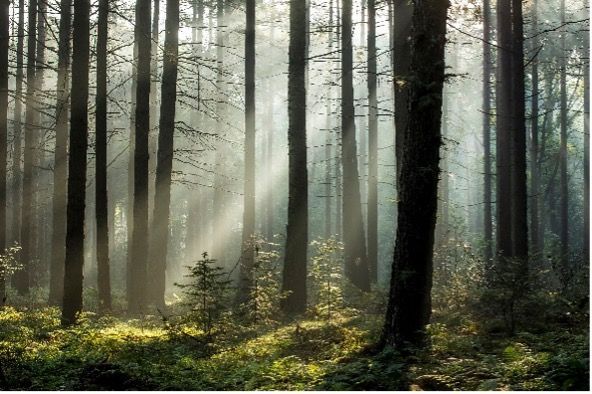
and
Chitin – crustaceans are the main source of chitin which forms robust shells
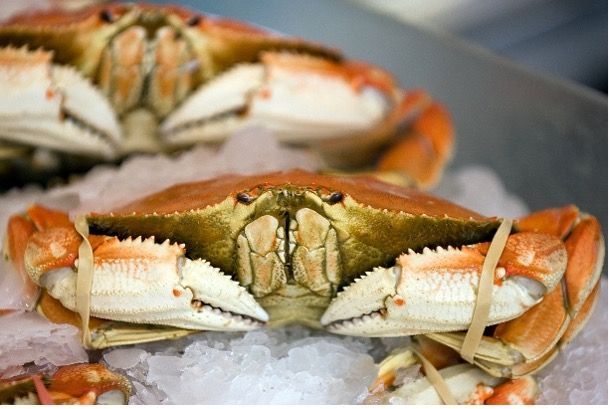
But there are many others including: starch, gelatine, agar, carrageenan, alginate and lignin.
Starch
Like cellulose, starch is a biopolymer linking glucose molecules. But starch has a branched structure with links through 1,4 and 1.6 alpha rather than 1,4 beta linkages which gives cellulose a more rigid elongated structure.
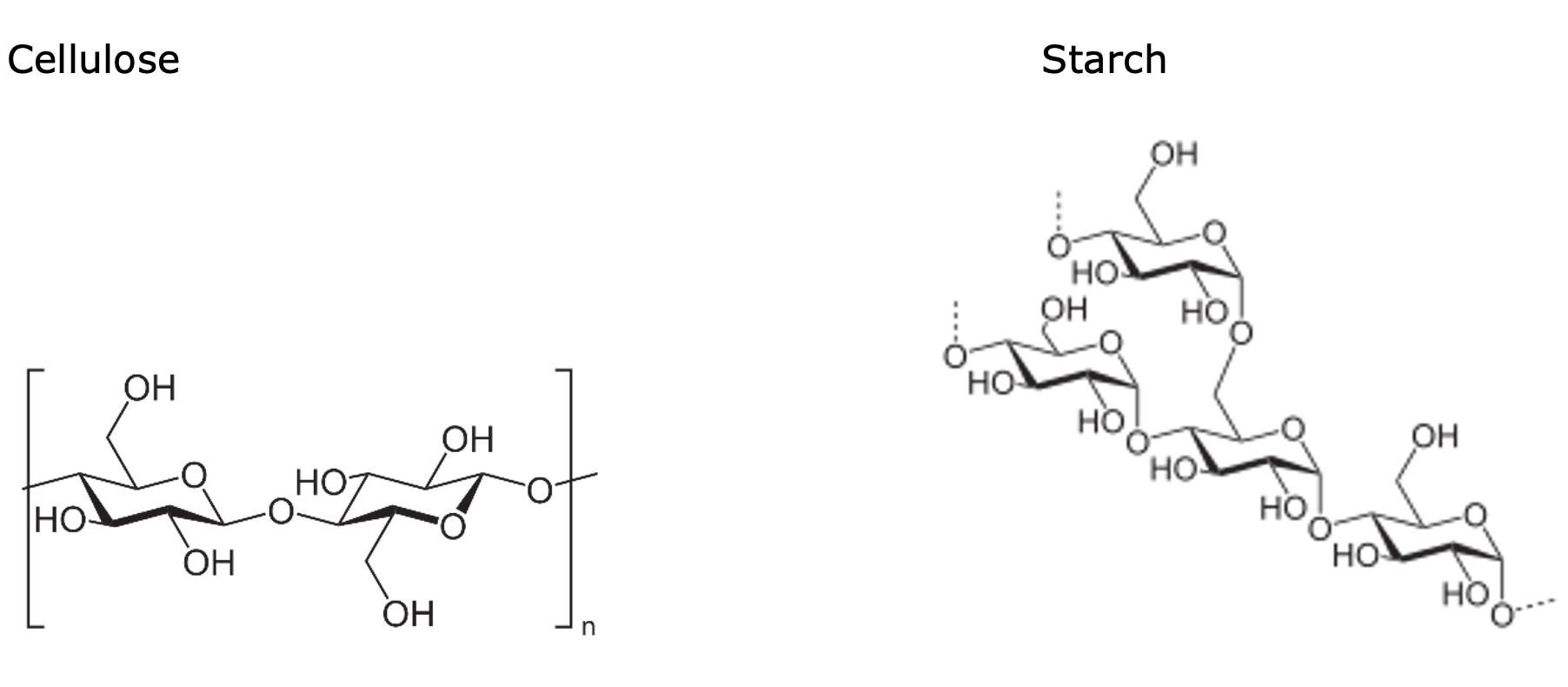
Gelatine
Gelatine is a hydrogel, a translucent colourless flavourless food ingredient created from collagen which is an animal protein. It will have different characteristics depending on the animal from which it was taken for example fish gelatine has a lower melting point than beef.
The amino acid content of hydrolyzed collagen is the same as collagen. Hydrolyzed collagen contains 19 amino acids, predominantly glycine (Gly) 26–34%, proline (Pro) 10–18%, and hydroxyproline (Hyp) 7–15%, which together represent around 50% of the total amino acid content. The balance between the Gly and Pro can make a difference to the structure conformations and the properties. And the production processes, the use of pH to control the morphology can also provide different properties and outcomes.
There has been much research in this area looking at how the properties vary with the different species source.
Read more here:
Structural and physical properties of gelatin extracted from different marine species
Investigation of the influence of pH on the properties and morphology of gelatin hydrogels
Gelatine, present use and future applications
Agar
Agar is a jelly like substance consisting of polysaccharides from the cell walls of red seaweed – the commercial product is the linear polysaccharide agarose (D-galactose and 3,6-anhydro-L-galactopyranose).
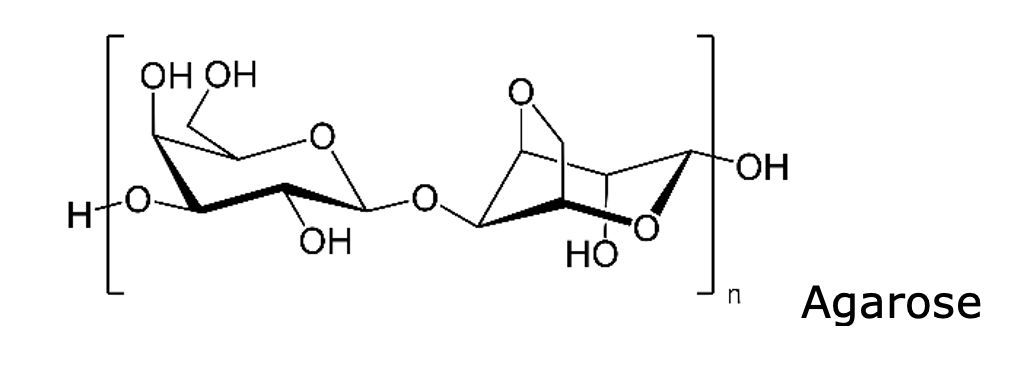
Agar from Gelidium seaweeds have less methoxy groups than from those from Graciliaria. This results in a lower gelling and melting temperature.
The gel forms in agar as a meshwork with pores which can be varied in size in proportion to concentration and can be very useful in protein separation and affinity chromatography.
More info: Handbook of Hydrocolloids, Chapter 2
Carrageenan
Carrageenan (CGN) is a high molecular weight, linear sulphated polysaccharide extracted from red seaweeds, composed of D-galactose residues linked in β-1,4 and α-1,3 galactose-galactose bond, widely used as a food additive in processed foods for its properties as a thickener, gelling agent, emulsifier, and stabilizer.
They are categorised as 3 classes based on their sulphate content. Kappa-carrageenan has one sulfate group per disaccharide, iota-carrageenan has two, and lambda-carrageenan has three.
- Kappa forms strong, rigid gels in the presence of potassium ions, and reacts with dairy proteins. It is sourced mainly from Kappaphycus alvarezii.
- Iota forms soft gels in the presence of calcium ions. It is produced mainly from Eucheuma denticulatum.
- Lambda does not gel and is used to thicken dairy products.
The primary differences that influence the properties of kappa, iota, and lambda carrageenan are the number and position of the ester sulphate groups on the repeating galactose units. Higher levels of ester sulphate lower the solubility temperature of the carrageenan and produce lower strength gels or contribute to gel inhibition (lambda carrageenan).
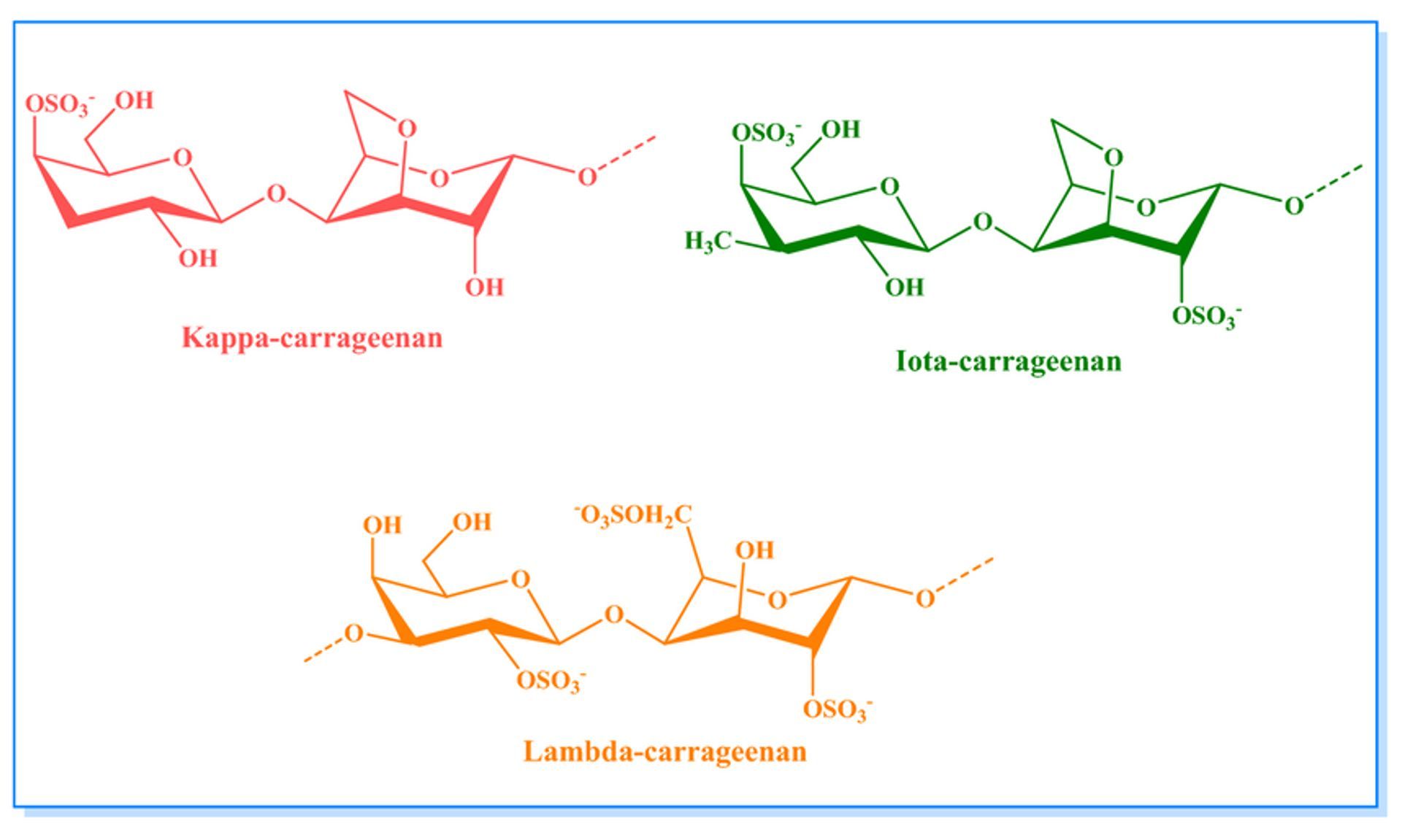
More info: Biomedical and Environmental Applications of Carrageenan-Based Hydrogels
Alginate
Alginic acid, also called algin, is a naturally occurring, edible polysaccharide found in brown seaweed. It is hydrophilic and forms a viscous gum when hydrated. When the alginic acid binds with sodium and calcium ions, the resulting salts are known as alginates. Its colour ranges from white to yellowish-brown.
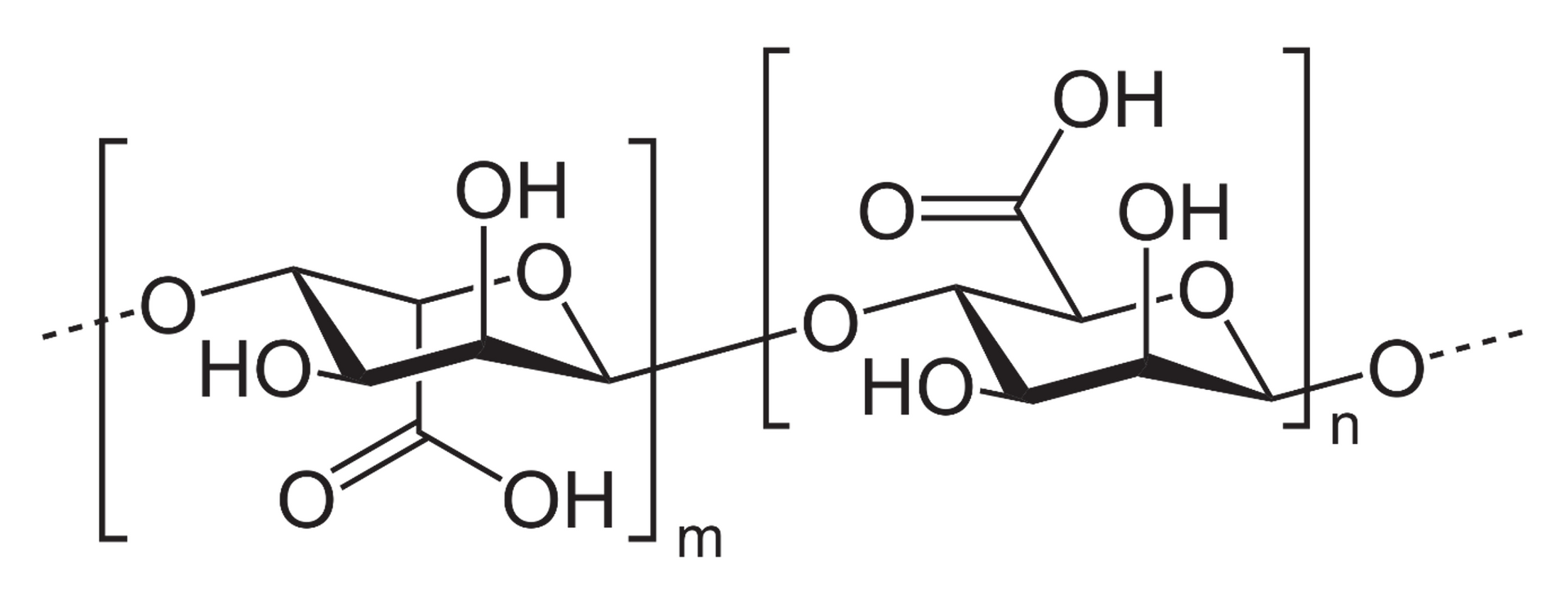
Alginic acid is a linear copolymer with homopolymeric blocks of (1→4)-linked β-D-mannuronate (M) and α-L-guluronate (G) residues, respectively, covalently linked together in different sequences or blocks.
It is one of the most preferred materials as an abundant natural biopolymer. It is particularly useful as a biomaterial because of its nontoxicity, hygroscopicity, and biocompatibility.
Alginate absorbs water quickly, which makes it useful as an additive in dehydrated products such as slimming aids and in the food industry as a thickening agent for drinks, ice cream, cosmetics, as a gelling agent for jellies and as a meat analogue when mixed with soyabean or pea protein. It is known by the code E401.
Alginate is used as an ingredient in various pharmaceutical preparations, such as Gaviscon, in which it combines with bicarbonate to inhibit gastroesophageal reflux.
Lignin
Another natural biopolymer that is fundamental to the structure and wellbeing of plants. It is a cross-linked Polymer which fills the spaces between cellulose in the cell walls, helping to transport water and nutrients. It is crucial especially in bark of trees. It is hydrophobic.
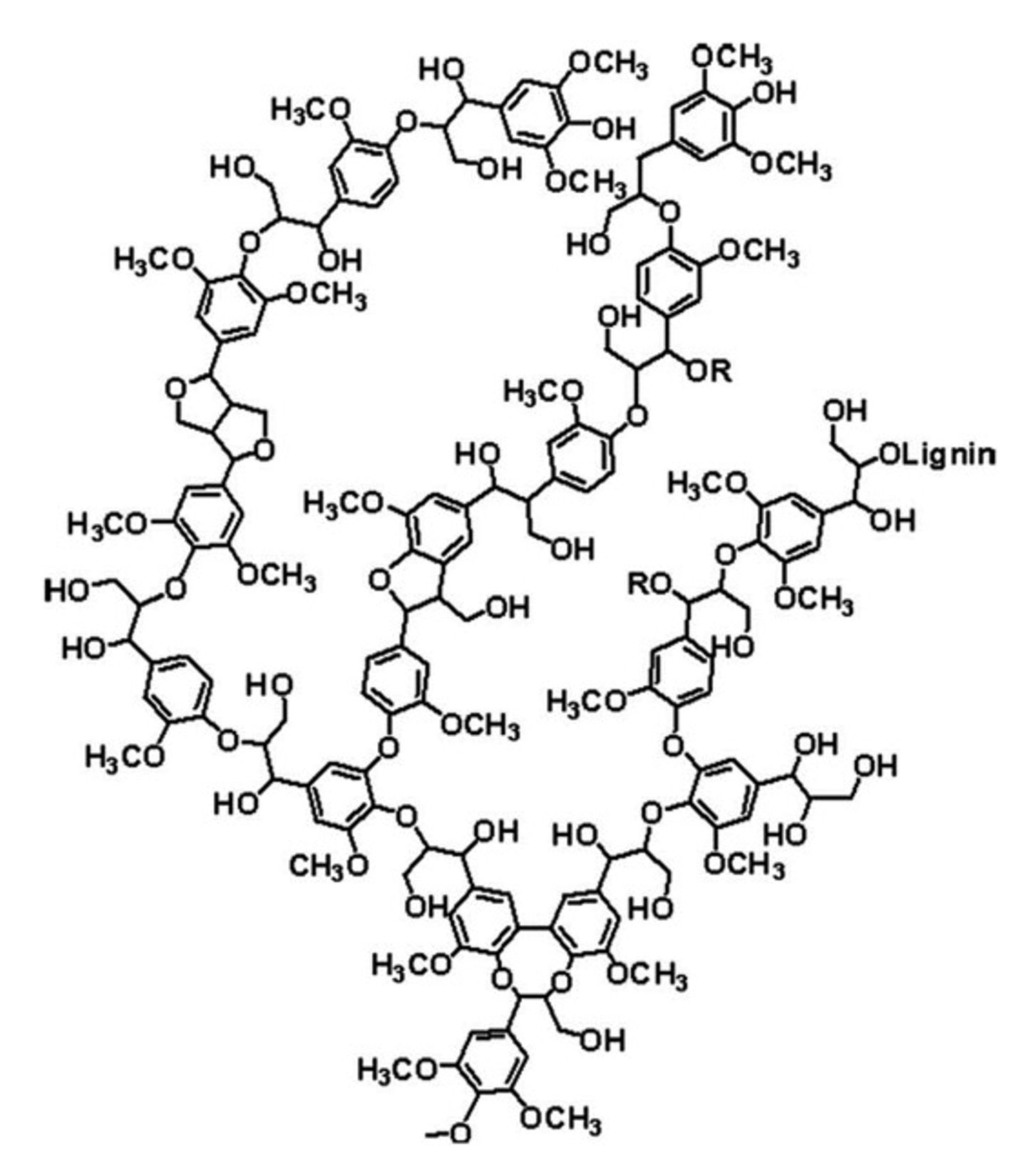
The relative amounts of the precursor "monomers" (lignols or monolignols) vary according to the plant source. Lignins are typically classified according to their syringyl/guaiacyl (S/G) ratio.
More info: Lignin biosynthesis
